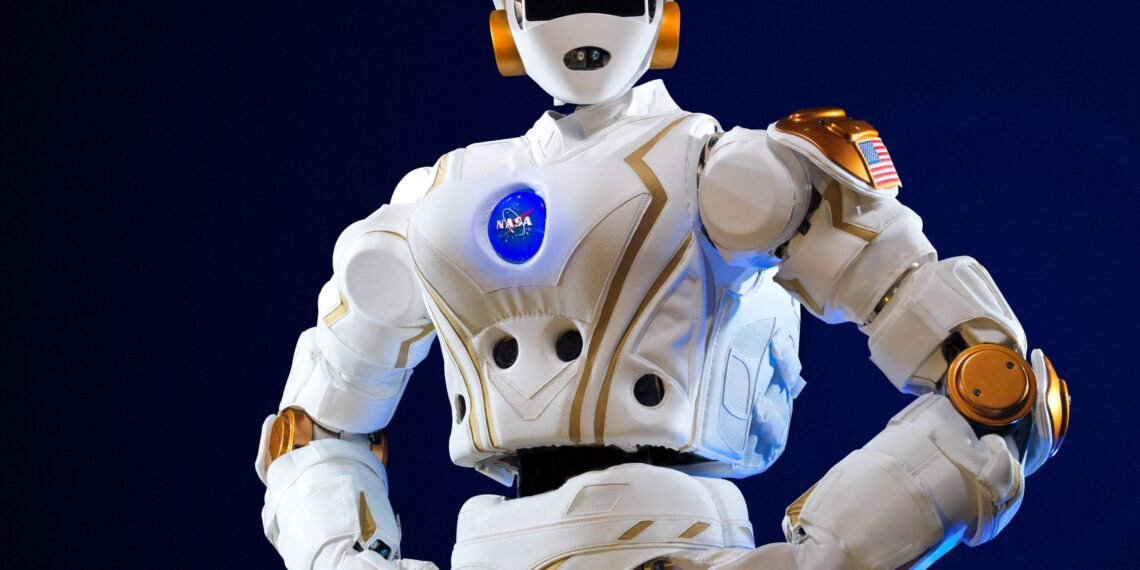India is soon to launch its first-ever humanoid robots, designed to assist across various industries. From guiding visitors and handling transactions in public spaces to supporting elderly patients in healthcare, these robots will bring AI-powered precision and efficiency to everyday tasks. Their potential also extends to education, entertainment, security, and even space exploration.
By PC Bureau
India will soon have a robot capable of performing a wide range of tasks that mimic human actions with precision and efficiency. These humanoid robots can assist in customer service by greeting and guiding visitors, handling transactions, and providing information in public spaces like malls or hospitals. In healthcare, they will support elderly patients, assist with mobility, and even aid in telemedicine.
The robots will also be used in manufacturing for repetitive tasks like assembly and material handling. They will be capable of engaging students in interactive learning, offering companionship for entertainment, and providing security by patrolling premises. Additionally, humanoid robots will play crucial roles in disaster response, household chores, and even exploration in space or the deep sea, showcasing their versatility across industries.
Addverb Technologies, a robotics startup supported by Mukesh Ambani, Chairman of Reliance Industries, is set to launch one of India’s first-ever humanoid robots in 2025. The Noida-based company aims to enter the growing global humanoid robotics market, positioning itself to compete with leaders like Tesla and Boston Dynamics.
Focused on creating AI-driven humanoid robots, Addverb plans to develop machines capable of performing complex tasks across industries such as fashion, retail, and energy. The company is driven by a vision to eliminate “3D” jobs—those that are dull, dirty, and dangerous, according to Co-Founder and CEO Sangeet Kumar.
Incorporating advanced GPU technology, energy-efficient actuators, and dual-arm capabilities, the robots will be designed for dynamic environments, performing intricate tasks and navigating various terrains. The development will also benefit from a strategic partnership with Jio, leveraging its AI platform and 5G services to enhance the robots’ capabilities.
A humanoid robot is a type of robot designed to resemble the human body in appearance, structure, and movement. These robots typically have a head, torso, arms, and legs, mimicking human anatomy to some extent. The primary goal of humanoid robots is to perform tasks that humans can do, either autonomously or with minimal human intervention.
Humanoid robots often feature advanced artificial intelligence (AI) and robotics technologies to interact with their environment, recognize and respond to commands, and carry out various functions. Some may be programmed to assist in specific industries such as healthcare, retail, entertainment, or manufacturing, performing tasks that are repetitive, dangerous, or physically demanding for humans.
A humanoid robot is a type of robot designed to resemble the human body in appearance, structure, and movement. These robots typically have a head, torso, arms, and legs, mimicking human anatomy to some extent. The primary goal of humanoid robots is to perform tasks that humans can do, either autonomously or with minimal human intervention.
Humanoid robots often feature advanced artificial intelligence (AI) and robotics technologies to interact with their environment, recognize and respond to commands, and carry out various functions. Some may be programmed to assist in specific industries such as healthcare, retail, entertainment, or manufacturing, performing tasks that are repetitive, dangerous, or physically demanding for humans.
Key features of humanoid robots may include:
- Movement capabilities: They have limbs (arms and legs) that can perform complex actions, such as grasping objects or walking.
- Sensors and cameras: For vision, navigation, and interaction with their surroundings.
- AI and machine learning: To process information, make decisions, and learn from experience.
- Communication abilities: Through speech or gestures, allowing them to interact with humans.
Examples of humanoid robots include Honda’s ASIMO, SoftBank’s Pepper, and Tesla’s Optimus, each designed for different applications ranging from companionship and customer service to labor in industrial settings.
Humanoid robots are designed to perform a wide range of tasks that mimic human actions, Their abilities are continually evolving as technology advances, but here are some tasks humanoid robots can currently perform:
1. Customer Service and Assistance
- Greeting and guiding visitors: Humanoid robots can welcome guests in airports, malls, and museums, providing directions and answering questions.
- Assisting with transactions: They can handle basic transactions, such as check-ins at hotels or self-checkouts in retail stores.
- Providing information: They can provide live updates, weather reports, or general assistance, like how robots are used in hospitals to provide information to patients.
2. Healthcare Assistance
- Supporting patients: Humanoid robots can assist elderly or disabled patients with mobility, medication reminders, or monitoring vital signs.
- Telemedicine: Some robots act as telepresence devices, enabling doctors to remotely examine and communicate with patients.
- Disinfection: Robots can also be used to clean and disinfect hospital areas, helping to reduce the spread of infections.
3. Labor and Manufacturing
- Performing repetitive tasks: In factories, humanoid robots can carry out repetitive or physically demanding tasks such as assembling products or packaging goods.
- Material handling: They can move objects or heavy loads around a warehouse, similar to how industrial robots are used in logistics.
4. Education and Learning
- Teaching aids: Humanoid robots can be used to teach children in classrooms, engage them in educational activities, or provide personalized learning experiences.
- Language teaching: Some robots are designed to help people learn languages by interacting with them in natural conversation.
5. Entertainment and Companionship
- Performing in shows: Humanoid robots can act in theatrical performances, music videos, or as entertainers in amusement parks.
- Companion robots: Some humanoid robots are designed to interact with people emotionally, offering companionship, especially to the elderly or those living alone.
- Social interaction: Robots like SoftBank’s Pepper have been used to entertain and hold conversations, providing company to people in homes and businesses.
6. Search and Rescue
- Disaster response: Humanoid robots can be deployed in dangerous environments like after earthquakes, floods, or in collapsed buildings to help locate survivors, deliver supplies, or perform search operations in areas where humans can’t easily reach.
7. Security and Surveillance
- Patrolling: Humanoid robots can monitor premises, using their vision and sensors to detect unauthorized access or suspicious activities.
- Data collection: They can collect environmental data, monitor security cameras, or check for hazards, making them valuable in security applications.
8. Domestic Tasks
- Household chores: Some humanoid robots are designed to assist in the home, performing tasks such as cleaning, cooking, or even folding laundry.
- Assisting with the elderly or disabled: Robots can help people with limited mobility by assisting in day-to-day activities, such as dressing, moving objects, or getting in and out of bed.
9. Retail and Hospitality
- Serving customers: Humanoid robots can deliver food or drinks in restaurants, hotels, and cafes.
- Stocking shelves: Robots can be used in retail stores to help manage inventory, stock shelves, or even assist customers with product recommendations.
10. Exploration
- Space exploration: Humanoid robots can be designed to explore environments where humans might face danger, such as space missions or other planets.
- Deep-sea exploration: These robots can also be used in underwater research to explore the deep sea, where human divers might struggle to survive.
Humanoid robots are rapidly advancing, and their potential to handle a diverse range of tasks is growing as they become more integrated with artificial intelligence, machine learning, and advanced robotics technologies.













